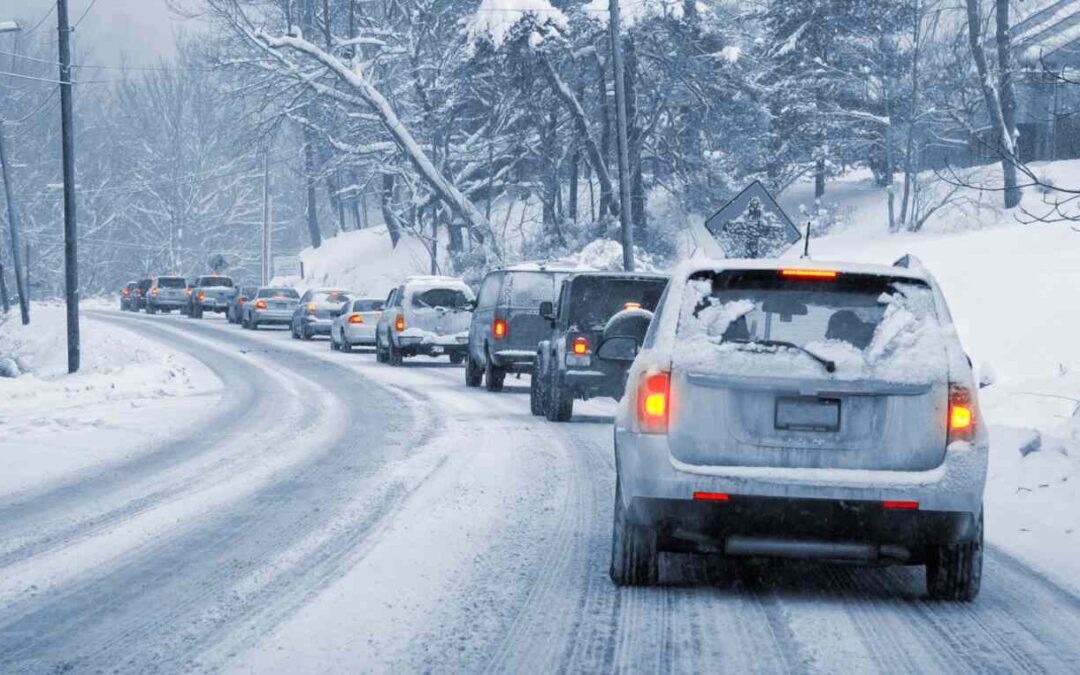As the temperature drops and snow blankets the roads, winter driving demands a different approach to caring for your car. Cold weather puts additional strain on nearly every aspect of your vehicle, from the tires to the battery. Small missteps can lead to bigger issues if left unchecked. To help you navigate the season safely and efficiently, here are ten common wintertime car care mistakes to avoid, along with practical tips to protect your investment and keep you on the road.
1. Overlooking Tire Maintenance
When temperatures fall, the air in your tires contracts, often reducing tire pressure. Underinflated tires result in poor traction, especially on icy or snowy surfaces, and can also cause uneven wear and lower fuel efficiency. Neglecting tire maintenance in winter could leave you struggling for grip right when you need it most.
What to Do Instead:
Check your tire pressure at least once a month during the colder months and top it up according to the manufacturer’s recommendations found in your owner’s manual or on the driver’s side door jamb. Consider switching to winter tires if you regularly drive on snowy or icy roads. These specialized tires provide better traction and shorter stopping distances in wintry conditions.
2. Forgetting About Fluid Levels
Your car’s fluids become even more critical as temperatures drop. Engine oil thickens in the cold, transmission fluid and brake fluid also face challenges, and your radiator coolant must be up to the task of preventing freeze-ups. Overlooking fluid checks can lead to sluggish performance, overheating, and potential engine damage.
What to Do Instead:
Check your oil, coolant, transmission fluid, and brake fluid levels regularly. Use oils and coolants recommended for lower temperatures—your owner’s manual will provide guidance. Topping off or replacing these fluids as needed ensures that internal components function smoothly no matter how chilly it gets outside.
3. Over-Idling Your Engine to Warm It Up
It’s a common belief that you should let your car idle for long periods to “warm up” before driving in cold weather. Modern engines don’t benefit much from prolonged idling—if anything, it wastes fuel and contributes unnecessary emissions. Extended idling can also dilute engine oil with unburned fuel, increasing wear over time.
What to Do Instead:
Start your car and let it run for about 30 seconds to a minute, then begin driving gently. Your engine and transmission will reach optimal temperature faster under light load rather than sitting still. Just remember to avoid aggressive acceleration until the engine warms up fully.
4. Ignoring Your Battery’s Well-Being
Batteries often struggle in cold weather because lower temperatures reduce their ability to hold a charge. If your battery is nearing the end of its life, frigid mornings can push it over the edge, leaving you stranded when you need to be on your way.
What to Do Instead:
Get your battery tested before winter arrives, and consider replacing it if it’s more than three or four years old. Keep the terminals clean and free of corrosion. Ensuring your battery is in good shape means less worry about no-start situations on freezing mornings.
5. Using Hot Water to De-ice Windows
Pouring hot water on your windshield to melt ice might seem like a quick fix, but the sudden temperature change can crack the glass. The last thing you need in winter is a broken windshield that compromises your visibility and your car’s structural integrity.
What to Do Instead:
Invest in a sturdy ice scraper and a can of windshield de-icer spray. Start your car, turn on the defroster, and gently clear the ice away. Patience and proper tools will save you from costly glass repairs.
6. Skipping Regular Washes Just Because It’s Cold
Road salt, sand, and chemicals used to keep roads safe can accumulate on your car’s underside and body panels. Over time, this buildup leads to corrosion and rust. While washing your car in cold weather might not be fun, ignoring it can cause irreversible damage.
What to Do Instead:
Visit a car wash that offers an undercarriage cleaning at least once a month in winter. Make sure to remove any salt residue to protect your car’s body, brakes, and exhaust system. A clean car not only looks better but also lasts longer.
7. Neglecting Your Windshield Wipers
Ice and freezing temperatures take a toll on windshield wipers, making them brittle and less effective. Worn wiper blades struggle to clear away slush and salt spray, reducing visibility and increasing the risk of accidents.
What to Do Instead:
Check your wiper blades before winter sets in. If they’re torn, cracked, or leaving streaks, replace them with winter-specific blades designed to handle ice and snow. Also, gently lift your wipers off the windshield when parked to prevent them from sticking to the glass overnight.
8. Leaving Your Car Unprotected Outdoors
While not everyone has access to a garage, leaving your car uncovered in harsh conditions takes a toll. Freezing winds, snow drifts, and ice storms all accelerate wear and tear on your vehicle’s exterior and mechanical components.
What to Do Instead:
Park in a garage if possible. If that’s not an option, consider a good-quality car cover to shield your vehicle from the elements. Even a covered parking structure or a carport can help minimize exposure to harsh winter weather.
9. Ignoring Dashboard Warning Lights
Cold weather can exacerbate existing issues. If a warning light on your dashboard comes on, don’t dismiss it. A check engine light, low coolant warning, or brake system alert may signify deeper problems that become more pronounced in winter’s colder conditions.
What to Do Instead:
Take warning lights seriously and have your car inspected by a professional as soon as possible. Early intervention can prevent a minor issue from turning into an expensive repair or leaving you stranded on an icy road.
10. Failing to Prepare for Emergencies
Winter driving is unpredictable, and even well-maintained cars can break down in extreme weather. Not having an emergency kit means you’ll be caught off guard if you get stuck in a snowbank or stranded with a dead battery.
What to Do Instead:
Assemble a winter emergency kit that includes essentials like a warm blanket, flashlight, jumper cables, non-perishable snacks, bottled water, and extra clothing. A phone charger and basic tools can also come in handy. This kit ensures you’re prepared if the worst happens and you need to wait for roadside assistance in frigid conditions.
Maintaining Your Car for Winter: The Bottom Line
Cold weather introduces a range of challenges that can impact your car’s performance and longevity. By avoiding these common mistakes, you’ll protect your vehicle from unnecessary wear and tear, enhance safety, and ensure a more enjoyable winter driving experience.
Remember, prevention is always more cost-effective than waiting for a major repair. Taking care of your tires, battery, fluids, and other essential components before problems arise will save you money and reduce the risk of getting stranded in miserable weather.
Stay Prepared and Seek Professional Help
If you’re unsure about your car’s readiness for winter, don’t hesitate to seek professional guidance. At All Around Auto Repair, our experienced technicians can inspect your vehicle, recommend the right tires, check fluid levels, and ensure your battery and windshield wipers are up to the task. With the proper care and attention, you can face winter’s challenges with confidence and peace of mind.
Contact Us Today:
- Location: 1244 Central Ave, Santa Rosa, CA 95401
- Phone: (707) 837-0646
- Website: All Around Auto Repair





